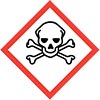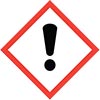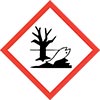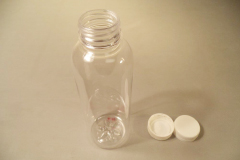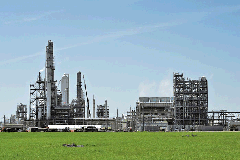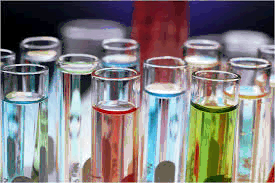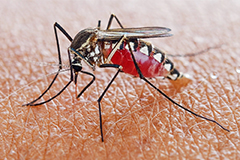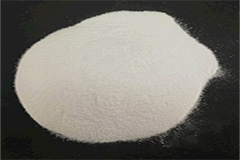| 1. STRUCTURE | |
|---|---|
| 2. PRODUCT NAME & DETAILS | |
|---|---|
| Product Name | Alpha-d-glucofuranose,1,2-0-(2,2,2-trichloroethylidene)-,(r) |
| Product Code | 002855 |
| CAS No | 15879-93-3 |
| HS Code | 2913.00.90 |
| Molecular Formula | C8H11O6CI3 |
| Molecular Wt. | 309.540 |
| Synonyms | 1,2-O-(2,2,2-Trichloroethylidene)-α-D-glucofuranose, Alpha-Chloralose, α-Chloralose |
| 3. REGULATORY INFORMATION
|
|||
| Chemical name
|
Common names and synonyms
|
CAS number
|
EC number
|
| Chloralose
|
Chloralose
|
15879-93-3
|
240-016-7
|
| European Inventory of Existing Commercial Chemical Substances (EINECS)
|
Listed
|
||
| EC Inventory | Listed
|
||
| United States Toxic Substances Control Act (TSCA) Inventory
|
Listed
|
||
| China Catalog of Hazardous chemicals 2015
|
Listed
|
||
| Chinese Chemical Inventory of Existing Chemical Substances (China IECSC)
|
Listed
|
||
| Korea Existing Chemicals List (KECL)
|
Listed
|
||
| Canadian Domestic Substance List (DSL)
|
Listed
|
||
| Canadian Non-Domestic Substance List (NDSL)
|
Not Listed
|
||
| Japanese Existing and New Chemical Substances Inventory(ENCS)
|
Not Listed
|
||
| 4. SPECIFICATION
|
|
| Physical Appearance
|
White Powder
|
| Beta-chloralose (by GC)
|
NMT 15.0%
|
| Melting Point
|
NLT 178-184°C
|
| Moisture Content (KF)
|
NMT 0.50%
|
| Solubility 2.5% in Methanol
|
Clear Solution
|
| Sulphated Ash
|
NMT 0.10%
|
| pH 5% In Water
|
6.5 to 7.5
|
| Assay (GLC) [Alpha-chloralose+ Beta-chloralose]
|
NLT 99.0%
|
| 5. APPLICATION | - Alpha Chloralose is used in baits to kill mice.
- The rats and mice menace is effectively controlled by Alpha chloralose loaded baits. - This allows rats and mice to come out of hiding before they are killed. - Alpha Chloralose is also used by farmers as an avian repellent to save crops. - In 1992, the United States Department of Agriculture's Wildlife Services (WS) program received approval from the United States Food and Drug Administration (FDA) to use alpha-chloralose (AC) to capture nuisance waterfowl (Anatidae), American coots (Fulica americana), and pigeons (Columba livia). We summarized use of AC by the WS program to capture nuisance birds during 1994-1995. WS biologists used AC to capture 3,767 birds during 124 operations in 19 states. Captured birds included wild mallards (Anas platyrynchos, 20%), domestic mallards (24%), muscovies (Cairina moschata, 5%), Canada geese (Branta canadensis, 10%), domestic geese (8%), coots (27%), pigeons (5%), and other (<1%). The proportion of birds present at a site that were captured was less for pigeons (6%) than for waterfowl and coots (≥68%). Overall mortality of target birds was 5%, ranging from 0.1% (n=1,014) for coots to 67% (n=3) for mute swans (Cygnus olor). In addition, 102 nontarget birds were captured, of which there was 12% mortality. States with the greatest number of AC operations were Tennessee (14%), Georgia (12%), and California, Nevada, and Oregon (10% each). Most nuisance situations were at parks (39%), followed by golf courses and resorts (19%), and residential areas (17%). Capture operations were most frequent during March-April (29%) and least frequent during October-January (19%). AC is an effective tool to remove nuisance ducks, geese, and coots from situations where other techniques are impractical. We recommend additional research to improve existing techniques and to expand use of AC to capture other nuisance species. -As per the proceedings of the 16th Vertebrate Pest conference (1994) February 1994, BIRD CONTROL IN NEW ZEALAND USING ALPHA CHLORALOSE AND DRC 1339. As per report Horticulturists and general public in New zealand experienced increase problem with a number of introduced birds species. This was meant that many people wish to carry out bird control operation themselves to reduce the problems these birds caused. Most of this control was to be carried out by grower themselves. ALPHA CHLORALOSE is the only known toxin the general public have access to for controlling birds. It is available in a veriety of baits form with a maximum loading of Alpha chloralose 2 % (w/w). |
|||
| 6. HAZARD CLASSIFICATION | Hazardous substance (UN No. 3077).
|
|||
| 7. ANNUAL CAPACITY | 60 MT.
|
|||
| 8. STORAGE CONDITION | Store in closed container at ambient temperature. Avoid direct sunlight.
|
|||
| 9. PACKING DETAILS
|
STD Pack Size : 20 kg Net Wt. Corrugated Boxes
One Pallet Size : 18 x 20 kg Corrugated Box = 360 kg Total Quantity in 20' container : 10 Pallets x 360 Kg = 3600 kg Total Quantity in 40' container : 20 Pallets x 360 Kg = 7200 kg |
|||
| 10. SHELF LIFE
|
3 years.
|
| Disclaimer |
|---|
| Typical properties should not be considered as specification. Product covered by valid patents are not offered or supplied for commercial use. The Patent position should be verified by the customer. Products will not be supplied to countries where they could be in conflict with existing patents. Products currently covered by valid US patents are offered for R&D; use in accordance with 35 USC 271 (e) (I) Above information is given in good faith and without warrenty. |
The above information is given in good faith and is without warranty
Products Recommendations
2-(2-Hydroxy-4-methoxyphenyl)-4,6-Bis(phenyl)-1,3,5-triazine (Appolo-1579 (A-103))
CAS No. 106556-36-9
Automotive Coatings

2-(4-Methoxyphenyl)4,6-bis-(2,4-dihydroxyphenyl) -1,3,5-triazine (Appolo-125 (P))
CAS No. 1440-00-2
Sunscreen Lotion
2-Chloro-4,6-Bis(phenyl)-1,3,5-triazine (Stellar-2015)
CAS No. 3842-55-5
UV Absorber & Light Stablizer additive
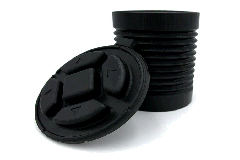
2,4-Bis(2,4-dimethyl phenyl)-6-(2-hydroxy-4-methoxy phenyl)1,3,5-triazine (Appolo-1164 GL)
CAS No. 1820-28-6
UV Absorbers & Light Stabilizer additive

4-(2-Hydrazino-2-oxoethyl)-4-methylmorpholine-4-iumchloride (HMMC)
CAS No. 876-57-3
Pharmaceutical Intermediate
Frequently Asked Questions
What Are the Application & Uses of Alpha Chloralose?
Alpha chloralose is used in baits to kill mice. The rats and mice menace can be effectively controlled by α-Chloralose baits. It is also used as an avian repellent to save crops by farmers.
What Is a Unique Numerical Identifier (Cas No) Assigned to Alpha Chloralose?
The given unique CAS registry number for α-D-Glucofuranose is “15879-93-3”. This CAS NO is global identification for this chemical anyone wanted to get Alpha-chloralose for production/research purpose can find it with the help of this number.
Is Alpha Chloralose compound is Hygroscopic in nature?
No, Alpha Chloralose is not Hygroscopic material in nature.
What is the annual capacity of Alpha Chloralose?
Our annual Capacity is 60 MT of Alpha Chloralose.
What Is the Perfect Storage Condition & Shelf Life for Alpha chloralose?
The Perfect Storage condition for Alpha-chloralose is that it should be stored in closed containers at ambient temperature. Avoid direct sunlight and has a shelf life of 2 years.
What Is the Reaction Mechanism of Alpha-chloralose on Rodent & Mice?
Alpha-chloralose (AC) has both stimulatory and depressive action on the Central nervous system. It induces an anaesthetic effect on the Rodent. Due to the hypnotic and anesthetic effect on rodents, death is not painful.
How Long Alpha Chloralose Does Takes to Knockout & Kill Rodent & Mice?
The knock out action and killing is very fast with Alpha Chloralose. The maximum killing duration is few hours.
What will be loadability of Alpha-Chloralose in one container load?
The loadability of Alpha-Chloralose will be in 20 Fit container 3600 kg and in 40 Feet container 7200 kg.
How Alpha-Chloralose is useful to Farmers?
Alpha-Chloralose is useful to farmers as an avian repellent to save crops and as Rodenticide to protect the crops from the Rodents..
Under which HSN code you have export the Alpha-Chloralose?
HSN Code is 2913.00.90

